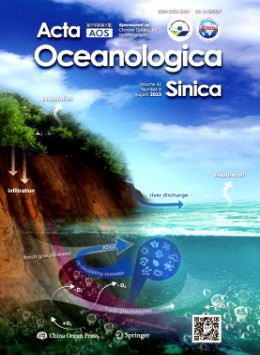如何縮短《Acta Oceanologica Sinica》雜志的審稿周期?
來源:優發表網整理 2025-04-03 18:27:37 2000人看過
想要縮短《Acta Oceanologica Sinica》雜志的審稿周期需要作者、編輯部和審稿人等多方面的共同努力,作者可以采取一些有效措施,間接地加快審稿進度,提升稿件的處理效率。
建議如下:
一、提高論文質量
(1)嚴格遵循投稿要求:在投稿前,仔細閱讀《Acta Oceanologica Sinica》雜志的投稿指南,包括格式要求、字數限制、參考文獻格式等。確保稿件符合雜志的規范,避免因格式問題被退回修改,從而耽誤時間。
(2)提高論文質量:確保論文的研究內容具有創新性和學術價值,數據準確,論證嚴謹,語言表達清晰流暢。高質量的稿件更容易通過初審,進入同行評審階段。
二、選擇合適的投稿時機
(1)關注期刊審稿周期:在投稿前,了解《Acta Oceanologica Sinica》雜志的審稿周期(預計1-3個月)和發表周期(月刊),以便合理安排投稿時間。
(2)關注期刊動態:了解期刊的專題征稿或熱點話題,針對性地投稿,可能獲得優先處理。
三、與編輯部保持良好溝通
(1)主動了解審稿進度:如果超過預計的審稿時間仍未收到回復,可以禮貌地向編輯部發送郵件,詢問稿件的審稿進度。
(2)尊重審稿意見:認真對待審稿意見,積極修改論文中的不足之處,共同探討論文的改進方向。
需要注意的是,縮短審稿周期的前提是保證稿件的質量,不能為了追求速度而犧牲學術嚴謹性。
《Acta Oceanologica Sinica》雜志創刊于1982年,是由中國科學技術協會主管、中國海洋學會主辦的學術理論月刊。國內刊號CN:11-2056/P,國際刊號ISSN:0253-505X。該雜志以推動科技改革與發展、探索科技規律為宗旨,致力于為科技工作者、研究者和管理者提供一個學術交流的平臺。
《Acta Oceanologica Sinica》雜志投稿建議:
一、Submission of papers
A submission to AOS must be the original work of authors which have not been published or under consideration for another publication in a similar form. Authors are requested to submit the electronic version of the manuscript and figures (in MS WORD) on line, or by E-mail.Please include your E-mail address, phone and fax number on the first page of the manuscript. For further information, please contact with our editors.
二、Manuscript preparation
1.General: Manuscripts must be typewritten, double-spaced with wide margins on one side of white paper. Full postal addresses must be given for all co-authors. Authors should consult a recent issue of the journal for style if possible.
2.Title: The title should be short and informative. Authors should avoid using abbreviations, chemical element signs and mathematical variable signs in the title.
3.Abstracts: The essential contents of each paper should be recapitulated briefly in an abstract of not more than 500 words at the head of the paper.
4.Key words: Please provide up to three to six subject key words.
5.Text: Follow this order when typing manuscripts: Title, Authors, Affiliations, Abstract, Key Words, Main Text, Acknowledgements, Appendix, References, Figure Captions and then Tables.
6.Units: Units should be SI with the exception of a few approved non-SI units of wide oceanographic usage.
7.Figures: Authors should send high quality electronic form (save as *.JPG) of all figures.
8.References: All publications cited in the text should be presented in a list of references following thetext of the manuscript.
In the text refer to the author’s family name (without initials)“Wang (1998) hasshown that…”or“This is in agreement with results obtained later (Kramer, 2001)”. For three or moreauthors use the first author followed by “et al.” in the text. The list of references should be arranged alphabetically by authors’ names. References should be given in the following form:
Bjerknes J. 1969. Atmospheric teleconnections from the equatorial Pacific. Mon Wea Rev, 97: 163-172
Chen Yuejuan, Jian Jun, Zhang Hong, et al. 2001. The interannual variability of meridional circulation from 1961 to 1977 and its relation with SSTA. Chinese Journal of Atmospheric Science (in Chinese), 25: 80-88
Elbaz-Poulichet F, Huang W W, Martin J M, et al. 1990. Behavior of dissolved trace elements in the Changjiang Estuary. In: Yu Guohui, Martin J M, Zhou J Y, eds. Biogeochemical Study of the Changjiang Estuary. Beijing: China Ocean Press, 293-311
Yun Caixing. 2005. Application of Remote Sensing Techniques to Coastal Zone and Offshore Area (inChinese). Beijing: China Ocean Press, 24-28
聲明:以上內容來源于互聯網公開資料,如有不準確之處,請聯系我們進行修改。
